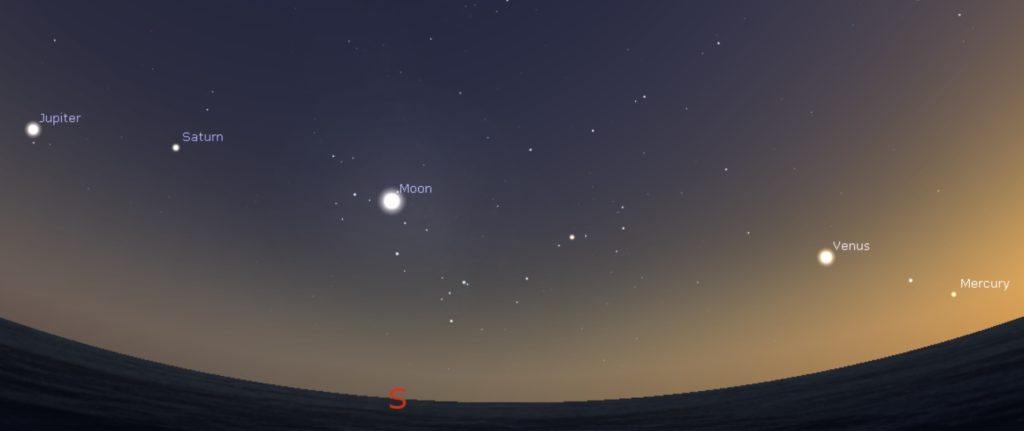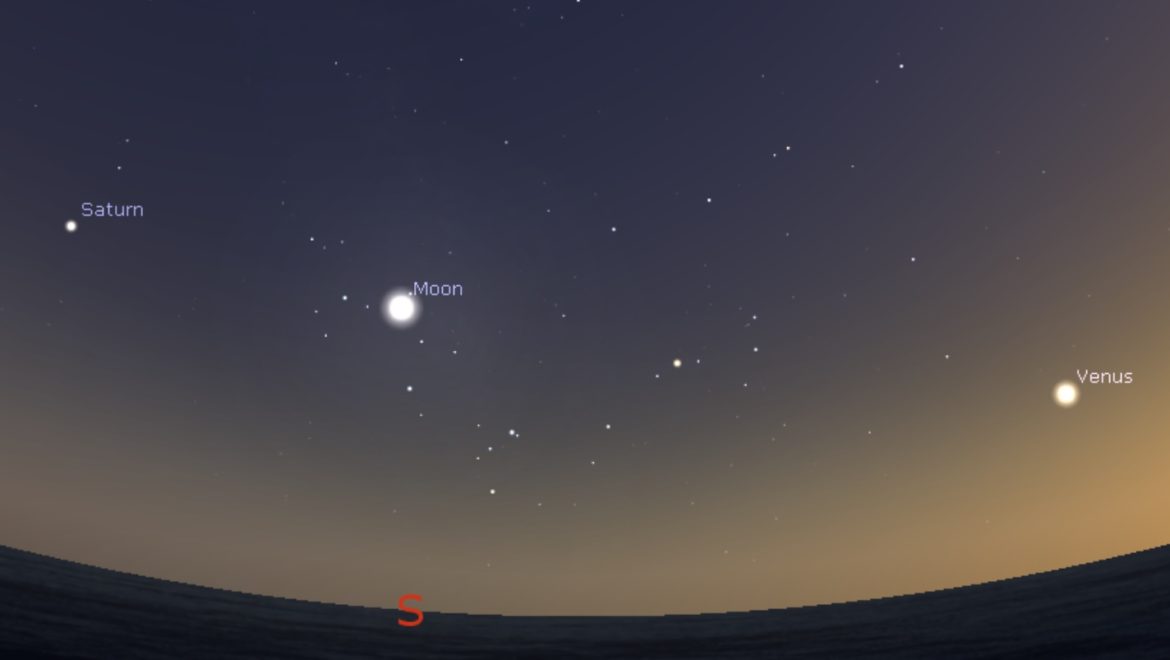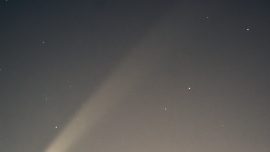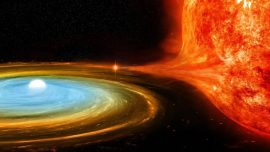Enter the Equinox: Top Astronomy Highlights for September 2021
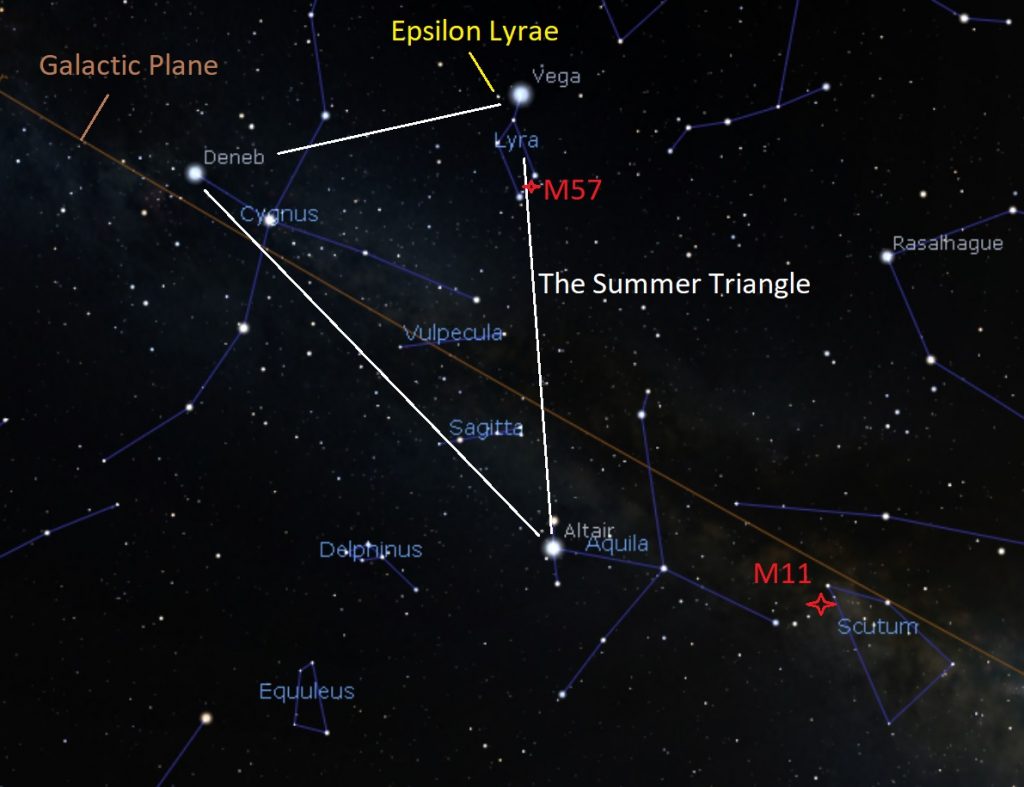
September is equinox month. Nights are getting longer in the northern hemisphere, meaning more time under dark skies before the chill of northern hemisphere winter sets in.
The September Sky: The glories of the summer Milky Way still linger post dusk. Up north, the famous summer triangle asterism rides high, with the stars Deneb, Altair, and Vega at its three corners.
The biannual equinox is short for ‘equal nights,’ a moment twice a year (once in March and again in September) when the rotational pole of the Earth is at a 90 degree perpendicular angle to the Sun, and day and night are equal worldwide. The equinox season is also special for a few other reasons: One is because it also marks GEOSat eclipse season. This is the period of a few weeks on either side of the equinox where distant satellites in geostationary/geosynchronous orbit seem to flare briefly into visibility, before vanishing into Earth’s shadow. Another phenomenon to watch for near the equinox is a peak in aurora activity. This biannual surge used to be a complete mystery until it was explained by what’s known as the Russell-McPherron Effect, which posits that solar wind streams through fissures opened in the Earth’s magnetic field. This occurs because the opposing magnetic field of the Earth is at its weakest angle right around the equinox. In 2021, we’re just now coming off a profound solar minimum, as Solar Cycle #25 gets underway in earnest. The jury is still out on whether or not the next solar cycle will ‘dazzle’ or ‘fizzle,’ though we’ve already seen some heightened solar activity worldwide in late August.
The Moon in September 2021: First Quarter Moon occurs on September 13th, and Last Quarter Moon occurs on September 28th, meaning the dark of the Moon (the best times for deep sky observations in the evening) runs from the 1st to the 13th centered on New Moon around September 7th, and resumes at the end of the month on September 29th and 30th. Of course, the Moon is a fascinating object to study in its own right, especially near Quarter phase when mountains and craters stand out in sharp contrast along the daylight/terminator.
The Planetary Rundown for September 2021: This month offers a true treat for evening skywatchers, as every naked eye planet is visible immediately after sunset. Mars is toughest, at just 12 degrees from the Sun at the start of the month, well below Mercury and Venus to the west. The gas giant planets Jupiter and Saturn rule the night rising in the east, fresh off of opposition last month. As an extra challenge, try spotting +8th magnitude Neptune with binoculars or a telescope in Aquarius this month. Fun fact: Neptune was discovered in the same constellation in 1846 after predictions made by astronomer Urbain Le Verrier), and has only completed one orbit in the last decade since discovery.
Highlighted object (northern hemisphere) Messier 57 The Ring Nebula – it was one of the first deep sky objects I ever went after. Situated in the constellation of Lyra the Lyre, M57 is a fine planetary nebula located about midway between the bright stars Beta and Gamma Lyrae, making it an easy find. I can just spy the ‘ghostly doughnut’ of M57 with binoculars from a dark sky site, and it really jumps out in a telescopic view. M57 is located approximately 2,300 light-years distant.
What you’re seeing is a star at the end of it’s life, ejecting gas and dust in its final death throes back into space. A challenging +15th magnitude white dwarf sits in the center of M57. Our Sun may do the same about 5 billion years from now, though a 2013 study cast doubt on whether we will also one day host a planetary nebula for future denizens of the Milky Way to enjoy at star parties. Fun fact: the term ‘planetary nebula’ actually has very little to do with planets: rather, early astronomers such as Charles Messier thought they appeared ‘planetary-looking’ while he was compiling his famous deep-sky catalog… and the name stuck.
Highlighted object (southern hemisphere): The Wild Duck Cluster Messier 11 – Many observers tend to overlook open clusters, which is a shame. Often, these loose stellar groupings still have enough ‘punch’ to go after, even from light-polluted urban sites. One of my favorites is M11. I often think of it as in the constellation of Aquila as it lies just off of the Eagle’s tail, but it’s actually just across the border in the tiny constellation of Scutum the Shield.
M11 is at southern declination of just over -6 degrees, making it a fine object for either hemisphere. At 6,200 light-years distant, M11 lies in the Sagittarius Arm of the Milky Way, towards the galactic center. At the eyepiece, M11 has a ‘powdered sugar’ look.
Challenge object (Northern Hemisphere): While you’re in the constellation Lyra checking out M57, try and see if you can resolve the famous ‘Double-Double’ star Epsilon Lyrae. The quadruple system is about 1.5 degrees from the brilliant Vega. Splitting the 210” pair is easy, even in binoculars; the challenge is to split the ‘pair into pair(s),’ both of which are only about 2.5” apart. This amazing system lies 162 light-years distant.
Challenge object (Southern Hemisphere): It’s a true irony of the night sky. Red dwarf stars, the most common type of stars in the universe are too faint to see with the naked eye. One of the brightest is the +6.6 magnitude star AX Microscopium in the obscure constellation of the Microscope. This star is 12.9 light-years distant, and offers a fine example of a nearby solitary red dwarf to check off of your life observing list. The coordinates for AX Microscopium are: RA: 21 Hours 18’ 35”, Declination -38 Degrees 46’ 49”.
Top Astronomy Events for September 2021
7th-New Moon
14th-Mercury greatest elongation (27 degrees east of the Sun at dusk)
14th-Neptune at opposition
15th-GEOSat eclipse season
17th-Comet 6P/d’Arrest at perihelion (+9th magnitude, 93 degrees east of the Sun in Sagittarius at dusk)
20th-Full Harvest Moon
20th-762 Pulcova occults +7 magnitude star for Mexico and US, in the brightest asteroid stellar occultation for 2021.
22nd-Southward Equinox
23rd-Aurora season
